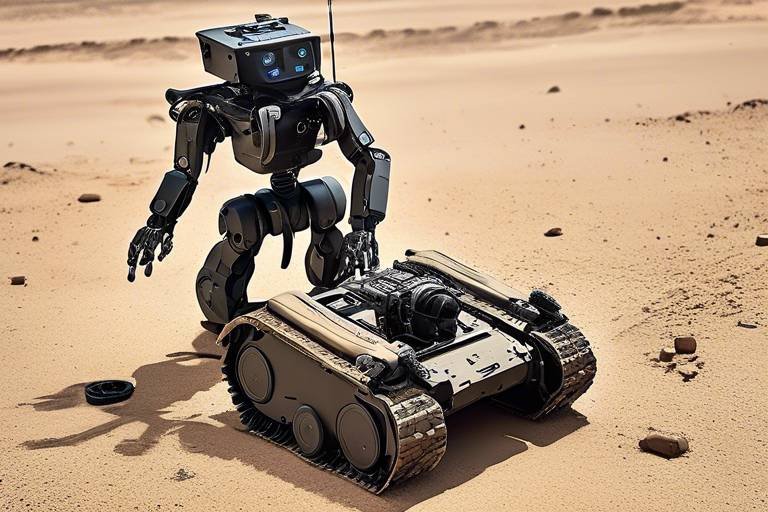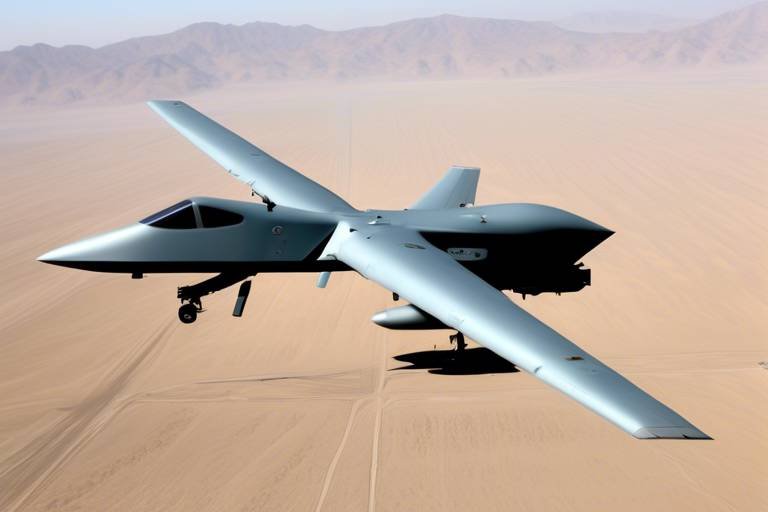Current Trends in the Integration of Robotics in Combat Vehicles
The landscape of modern warfare is undergoing a radical transformation, driven by the rapid advancement of robotics technology. As military forces seek to enhance their operational capabilities, the integration of robotics in combat vehicles has emerged as a pivotal trend. This integration is not just about adding new gadgets; it's about fundamentally changing how missions are conducted, improving both efficiency and safety. Imagine a battlefield where vehicles can navigate complex terrains autonomously, carry out logistics without human intervention, and make real-time decisions based on artificial intelligence. This is not science fiction; it's the reality of today's military operations.
One of the most significant advancements in this domain is the development of autonomous navigation systems. These systems allow combat vehicles to traverse challenging environments without the need for a human driver, significantly reducing the risk to personnel. Picture a tank maneuvering through a dense forest or a rugged mountain range, all while avoiding obstacles and enemy threats. This capability not only enhances mission success rates but also ensures that soldiers can focus on strategic objectives rather than the complexities of navigation.
Moreover, the integration of robotic arms and manipulators into combat vehicles is revolutionizing how equipment and munitions are handled. These robotic systems provide precise control, enabling operators to perform tasks that would otherwise require significant physical effort. For instance, consider the challenges faced by soldiers when loading heavy ammunition under fire; robotic arms can take on this burden, allowing human operators to concentrate on their safety and mission objectives.
Unmanned Ground Vehicles (UGVs) are also gaining traction, serving critical roles in reconnaissance and logistics. These vehicles can operate in hostile environments, gathering real-time data and delivering supplies without putting soldiers in harm's way. The ability to deploy UGVs for surveillance and reconnaissance means that military forces can gather intelligence without risking lives. Imagine sending a small, stealthy robot into a potentially dangerous area to assess threats while the soldiers remain safely back at base.
In addition to reconnaissance, UGVs are proving invaluable for logistical support. They can transport supplies and equipment to remote locations, ensuring that troops are well-equipped during missions. This not only enhances operational efficiency but also reduces the need for human convoys, which are often vulnerable to ambushes. The logistics of warfare are becoming increasingly automated, allowing for a more agile and responsive military force.
As robotics technology continues to evolve, artificial intelligence (AI) is becoming a cornerstone of combat robotics. AI enables vehicles to analyze vast amounts of data, make informed decisions, and adapt to changing battlefield conditions autonomously. This capability is crucial in dynamic combat scenarios where the ability to assess threats quickly can mean the difference between success and failure.
Furthermore, sophisticated decision-making algorithms are enhancing the effectiveness of combat robots. These algorithms allow robots to prioritize actions based on real-time assessments of the battlefield, significantly reducing the cognitive load on human operators. Imagine a combat vehicle that can autonomously decide to engage a target or retreat based on the current threat level, enabling soldiers to focus on strategic planning rather than immediate tactical decisions.
Machine learning is another exciting aspect of AI integration in combat robotics. This technology allows robots to learn from their experiences, improving their performance over time. As they encounter new strategies employed by adversaries, they can adapt and evolve, much like a player in a game learns from each match. This self-improvement is crucial in a constantly changing warfare environment.
Looking ahead, the future of combat vehicles hinges on effective human-robot collaboration. As military personnel train to operate alongside these advanced systems, the integration of human-robot interaction is becoming increasingly important. Training programs are evolving, ensuring that soldiers can effectively collaborate with robotic systems in high-pressure situations. This partnership is not just about technology; it's about enhancing mission outcomes and operational efficiency.
However, as we embrace these advancements, it's vital to address the safety and ethical considerations that come with them. The integration of robotics in combat operations raises questions about accountability and the potential for unintended consequences. Ensuring that these systems are used responsibly and ethically is crucial as we move forward into an era where robots play a significant role in military operations.
- What are the main benefits of integrating robotics into combat vehicles?
The main benefits include enhanced operational efficiency, improved safety for personnel, and the ability to perform complex tasks autonomously.
- How do autonomous navigation systems work?
These systems utilize advanced sensors and algorithms to navigate challenging terrains without human intervention, allowing for safer and more efficient missions.
- What role do unmanned ground vehicles play in modern warfare?
UGVs are essential for reconnaissance and logistics, providing real-time data and support while minimizing the exposure of soldiers to danger.
- Are there ethical concerns regarding the use of combat robotics?
Yes, as robotics become more integrated into combat operations, addressing safety and ethical concerns is crucial to ensure responsible use and accountability.

Autonomous Navigation Systems
Autonomous navigation is truly a game-changer in the realm of military combat vehicles. Imagine a vehicle that can traverse through rugged terrains, dodge obstacles, and make split-second decisions without a human at the helm. This technology not only enhances mission success rates but also significantly reduces the risks faced by personnel. By leveraging advanced sensors, GPS, and machine learning algorithms, these combat vehicles can navigate complex environments with remarkable precision.
One of the most impressive aspects of autonomous navigation systems is their ability to operate in diverse and challenging terrains. Whether it’s traversing rocky mountains, dense forests, or urban landscapes, these systems provide a level of adaptability that is essential for modern warfare. They can analyze the environment in real-time, mapping out the safest and most efficient routes to their destinations. This capability is not just about speed; it’s about ensuring that missions are executed with minimal risk to human lives.
Furthermore, the integration of autonomous navigation systems allows for increased operational efficiency. For instance, during reconnaissance missions, unmanned vehicles can scout ahead, gathering critical intelligence and reporting back to command centers without putting soldiers in harm's way. This not only saves lives but also allows military strategists to make informed decisions based on real-time data. The implications for future warfare strategies are profound, as these systems can be deployed in scenarios where human presence would be too dangerous or impractical.
However, as with any technological advancement, there are challenges and considerations to address. The reliability of these systems is paramount; a failure in navigation could lead to catastrophic consequences. Therefore, rigorous testing and validation processes are essential to ensure that these vehicles can operate flawlessly under various conditions. Additionally, the ethical implications of deploying fully autonomous systems in combat scenarios raise questions about accountability and decision-making in warfare.
In summary, autonomous navigation systems are revolutionizing combat vehicles, providing enhanced operational capabilities while prioritizing the safety of military personnel. As we move forward, the integration of this technology will undoubtedly shape the future of warfare, making it essential for military organizations to adapt and evolve in response to these advancements.
- What are autonomous navigation systems?
Autonomous navigation systems are technologies that allow vehicles to navigate and operate without human intervention, using sensors and algorithms to make decisions in real-time. - How do these systems improve safety for military personnel?
By enabling vehicles to perform dangerous tasks without human operators, autonomous navigation systems reduce the risk of injury or death in combat situations. - What challenges do autonomous navigation systems face?
Challenges include ensuring reliability, addressing ethical concerns, and developing robust systems that can operate effectively in diverse environments.

Robotic Arms and Manipulators
The integration of in combat vehicles is nothing short of a game changer. Imagine a soldier in the field, burdened by the physical demands of handling heavy munitions and equipment. Now, picture a robotic arm seamlessly taking on those tasks, allowing human operators to focus on strategy and decision-making. This technology not only enhances operational capabilities but also significantly reduces the physical strain on personnel, making it a vital component of modern military operations.
These advanced robotic systems are designed to perform a variety of tasks, ranging from loading and unloading supplies to conducting repairs on the battlefield. With their precision and strength, robotic arms can handle delicate equipment without the risk of human error. This capability is particularly crucial in high-stakes environments where every second counts. For instance, during a military operation, a robotic arm can swiftly retrieve ammunition, allowing troops to maintain their momentum and effectiveness.
Moreover, the versatility of these manipulators allows them to be equipped with various tools and attachments, enabling them to tackle different challenges. Whether it's a gripper for heavy lifting or a specialized tool for maintenance, these robotic arms can adapt to the mission at hand. This adaptability is akin to having a Swiss Army knife in a soldier's toolkit—always ready to meet the demands of the situation.
One of the most significant advantages of robotic arms is their ability to operate in hazardous environments. When faced with potential threats, such as explosives or chemical agents, deploying a robotic manipulator can mitigate risks to human lives. This technology acts as a protective barrier, allowing military personnel to maintain a safe distance while still accomplishing critical tasks.
Additionally, the integration of robotic arms into combat vehicles can lead to improved logistics and supply chain management. By automating the handling of supplies, military operations can achieve greater efficiency and speed. For example, robotic arms can be programmed to sort and distribute equipment, ensuring that troops receive what they need when they need it. This streamlined approach not only saves time but also enhances overall mission success rates.
In conclusion, the evolution of robotic arms and manipulators is reshaping the landscape of military combat vehicles. As these technologies continue to advance, we can expect them to play an even more significant role in enhancing operational efficiency and ensuring the safety of our armed forces. The future of warfare is here, and it is powered by robotics.
- What are robotic arms and manipulators used for in combat vehicles?
Robotic arms and manipulators are used for handling equipment, munitions, and performing maintenance tasks, significantly reducing the physical burden on soldiers. - How do robotic arms enhance safety in military operations?
They allow for tasks to be performed in hazardous environments without putting human lives at risk, acting as a protective barrier against potential threats. - Can robotic arms adapt to different tasks?
Yes, these systems can be equipped with various tools and attachments, making them versatile and capable of handling a wide range of challenges.

Unmanned Ground Vehicles (UGVs)
Unmanned Ground Vehicles, commonly referred to as UGVs, are transforming the landscape of modern warfare. These robotic systems are designed to operate on the ground without a human operator aboard, making them invaluable assets in military operations. Imagine a robotic vehicle that can traverse hostile terrain, gather crucial intelligence, and deliver supplies—all while keeping soldiers safe from potential threats. This is the reality that UGVs are creating, and their role in combat is only expected to grow.
One of the primary functions of UGVs is reconnaissance. Equipped with advanced sensors and cameras, these vehicles can scout enemy positions, monitor movements, and gather real-time data without putting human lives at risk. This capability is particularly significant in areas where traditional reconnaissance methods would be too dangerous. For instance, a UGV can be deployed into a potentially explosive zone to gather crucial information, allowing commanders to make informed decisions based on accurate data.
Moreover, UGVs play a critical role in logistical support. They can transport supplies, ammunition, and equipment to remote locations, ensuring that troops have everything they need to sustain their operations. This not only enhances the efficiency of military logistics but also reduces the need for human convoys, which are vulnerable to ambushes and attacks. Imagine a scenario where a UGV delivers essential supplies to a forward operating base while minimizing the risk to personnel—this is the kind of operational advantage that UGVs provide.
In addition to reconnaissance and logistics, UGVs are increasingly being employed in various combat scenarios. Their ability to operate in challenging environments, such as rugged terrains or urban settings, makes them versatile tools for military strategists. As technology advances, the capabilities of UGVs are expected to expand, incorporating features such as autonomous navigation and enhanced AI-driven decision-making processes. This evolution will allow UGVs to not only follow pre-programmed paths but also adapt to unexpected challenges on the battlefield.
As we look towards the future, the integration of UGVs into military operations raises some important considerations. The effectiveness of these vehicles depends not only on their technological capabilities but also on how well they can be integrated into existing military frameworks. Training soldiers to work alongside UGVs, understanding their limitations, and developing strategies that leverage their strengths will be crucial for maximizing their potential. The collaboration between human operators and UGVs will ultimately define the success of modern military operations.
- What are Unmanned Ground Vehicles (UGVs)?
UGVs are robotic vehicles that operate on the ground without a human operator onboard, used primarily for reconnaissance, logistics, and combat support. - How do UGVs enhance operational efficiency?
By performing tasks such as supply transport and reconnaissance without risking human lives, UGVs allow military personnel to focus on more critical operations. - Are UGVs safe to use in combat?
While UGVs reduce the risk to human soldiers, they still require careful operation and oversight to ensure safety and effectiveness in combat scenarios. - What technologies are integrated into UGVs?
UGVs often include advanced sensors, cameras, autonomous navigation systems, and AI-driven decision-making algorithms to enhance their capabilities.

Surveillance and Reconnaissance
In the ever-evolving landscape of modern warfare, have become pivotal components of military strategy. Unmanned Ground Vehicles (UGVs), equipped with cutting-edge sensors and advanced technology, are reshaping how military forces gather intelligence. Imagine a scenario where soldiers can obtain real-time data about enemy positions without stepping foot into harm's way. This is not just a dream; it’s the reality that UGVs bring to the battlefield.
These robotic vehicles are designed to operate in a variety of environments, from urban landscapes to rugged terrains. Equipped with high-resolution cameras, thermal imaging, and other sophisticated sensors, they can capture critical information and relay it back to command centers in real-time. This capability allows military strategists to make informed decisions quickly, enhancing operational effectiveness and reducing the risks faced by personnel.
Moreover, the integration of artificial intelligence (AI) into these systems means they can analyze data on the fly. For instance, UGVs can identify potential threats and assess the landscape, providing a comprehensive overview of the battlefield. This not only saves time but also minimizes the chances of human error. In a world where every second counts, having a robotic ally that can process information faster than any human is a game-changer.
To illustrate the impact of UGVs in surveillance and reconnaissance, consider the following table that outlines their key features:
| Feature | Description |
|---|---|
| High-Resolution Cameras | Capture detailed images and videos for intelligence analysis. |
| Thermal Imaging | Detect heat signatures, allowing for visibility in low-light conditions. |
| Real-Time Data Transmission | Send information back to command centers instantly for quick decision-making. |
| AI-Powered Analysis | Analyze data and identify threats autonomously, reducing human error. |
Additionally, UGVs can be deployed in various roles beyond just reconnaissance. They can conduct perimeter security, monitor supply routes, and even assist in search-and-rescue operations. The versatility of these vehicles makes them indispensable tools in modern military operations. As they continue to evolve, the potential applications seem limitless.
However, while the benefits of UGVs in surveillance are clear, it’s essential to consider the ethical implications of their use. With increased surveillance capabilities comes the responsibility to ensure that these technologies are used appropriately and do not infringe on privacy rights. As military forces adopt these advanced systems, ongoing discussions about their ethical deployment will be crucial to maintain public trust.
In conclusion, the integration of UGVs into surveillance and reconnaissance operations not only enhances the effectiveness of military strategies but also significantly reduces the risks faced by soldiers on the ground. As technology continues to advance, we can expect these robotic systems to play an even more critical role in shaping the future of warfare.
- What are Unmanned Ground Vehicles (UGVs)?
UGVs are robotic vehicles that operate without a human driver, often used for surveillance, reconnaissance, and logistical support in military operations. - How do UGVs enhance surveillance capabilities?
They are equipped with advanced sensors and AI that allow them to gather and analyze data in real-time, providing critical intelligence without risking human lives. - What ethical considerations are there regarding UGV use?
As with any technology, there are concerns about privacy, accountability, and the potential for misuse, which necessitate ongoing discussions and regulations. - Can UGVs operate in various environments?
Yes, UGVs are designed to function in diverse terrains, including urban areas and rugged landscapes, making them versatile tools for military operations.

Logistical Support
In the fast-paced world of modern warfare, the importance of logistical support cannot be overstated. Imagine a battlefield where supplies are as crucial as ammunition; without them, even the most well-planned operations can falter. Unmanned Ground Vehicles (UGVs) are stepping up to the plate, revolutionizing how military logistics operate. These advanced robotic vehicles are not just machines; they are the lifelines for troops stationed in remote locations, providing essential supplies while minimizing the risks associated with human convoys.
One of the most significant advantages of using UGVs for logistical support is their ability to operate in hostile environments without putting soldiers in harm's way. Picture this: a convoy of trucks carrying vital supplies is ambushed, leading to catastrophic losses. With UGVs, the need for human drivers in dangerous zones is drastically reduced, allowing for safer and more efficient supply chains. These robotic vehicles can navigate treacherous terrains, from rocky mountains to dense forests, delivering everything from food and water to ammunition and medical supplies.
Moreover, the integration of advanced sensors and GPS technology allows UGVs to optimize their routes in real-time. This means they can avoid potential threats and obstacles, ensuring timely deliveries. The result? Troops receive the supplies they need exactly when they need them, enhancing their operational readiness. To illustrate this point, consider the following table:
| UGV Type | Payload Capacity | Operational Range | Key Features |
|---|---|---|---|
| Logistics UGV | Up to 1,000 kg | 100 km | Autonomous navigation, obstacle avoidance, real-time data transmission |
| Reconnaissance UGV | 500 kg | 80 km | Advanced sensors, surveillance capabilities, stealth mode |
As we look towards the future, the role of UGVs in logistical support will only continue to grow. The military is investing heavily in these technologies, exploring ways to enhance their capabilities further. For instance, the development of hybrid models that can switch between autonomous and remote-controlled operation is on the horizon. This flexibility allows for quick adaptations to changing battlefield conditions, ensuring that troops remain well-equipped and supported at all times.
In conclusion, the logistical support provided by UGVs is a game-changer in modern warfare. By minimizing human risk and maximizing efficiency, these robotic systems are not just enhancing military operations; they are redefining them. As technology continues to advance, we can expect even more innovative solutions that will keep our soldiers safe and well-supplied, ultimately paving the way for success on the battlefield.
- What are Unmanned Ground Vehicles (UGVs)?
UGVs are robotic vehicles designed to operate without a human driver, often used in military applications for tasks like logistics, reconnaissance, and surveillance. - How do UGVs improve logistics in combat?
By transporting supplies autonomously, UGVs reduce the need for human convoys, minimizing risks and ensuring timely delivery of essential resources. - What technologies enable UGVs to navigate autonomously?
UGVs utilize advanced sensors, GPS, and artificial intelligence to navigate complex terrains and avoid obstacles in real-time. - Are there any safety concerns with using UGVs?
While UGVs enhance safety by reducing human exposure to danger, it is crucial to address ethical considerations and ensure accountability in their deployment.

Artificial Intelligence in Combat Robotics
Artificial Intelligence (AI) is transforming the landscape of combat robotics in unprecedented ways. Imagine a battlefield where vehicles can not only navigate autonomously but also make real-time decisions based on a multitude of data points. This is not science fiction; it's the reality we're moving towards. The integration of AI technologies into combat robotics enables these machines to analyze vast amounts of data, assess threats, and even adapt to the ever-changing conditions of warfare. The implications for operational efficiency are staggering, as these systems can operate with a level of precision and speed that far surpasses human capabilities.
One of the most exciting aspects of AI in combat robotics is the development of decision-making algorithms. These sophisticated algorithms are designed to evaluate threats, prioritize actions, and execute strategies autonomously. For instance, in a combat scenario, a robotic vehicle equipped with AI can quickly assess incoming fire, determine the source, and respond accordingly—all within seconds. This capability not only enhances the effectiveness of combat operations but also reduces the cognitive load on human operators, allowing them to focus on higher-level strategic decisions instead of getting bogged down by immediate threats.
Moreover, machine learning plays a crucial role in the adaptability of combat robots. As these systems are exposed to various combat scenarios, they learn from their experiences, refining their algorithms to improve performance over time. This means that a robot can become better equipped to handle new strategies employed by adversaries, making it a formidable opponent on the battlefield. Think of it like training a soldier; the more experience they gain, the more adept they become at navigating complex situations. Similarly, combat robots equipped with machine learning can evolve and enhance their operational capabilities, becoming smarter and more efficient with each mission.
The synergy between AI and robotics is not just about enhancing combat effectiveness; it's also about ensuring the safety of human personnel. By deploying AI-driven combat robots in high-risk situations, military forces can minimize human exposure to danger. For example, these robots can scout hostile territories, gather intelligence, and even engage in combat without putting soldiers in harm's way. This shift not only protects lives but also allows for more strategic planning, as commanders can rely on real-time data from these autonomous systems to make informed decisions.
As we move forward, the integration of AI in combat robotics raises important questions about ethics and accountability. While the benefits are clear, the potential for misuse or unintended consequences cannot be ignored. It’s crucial for military organizations to establish guidelines and frameworks that govern the use of AI in combat scenarios. This will ensure that while we harness the power of technology, we do so in a way that aligns with ethical standards and maintains accountability for actions taken by autonomous systems.
In conclusion, the incorporation of AI in combat robotics is not just a trend; it’s a revolution that is reshaping military operations. With autonomous decision-making capabilities and the power of machine learning, these systems are set to redefine how wars are fought and won. As we embrace this technological evolution, it’s essential to balance innovation with ethical considerations, ensuring that we leverage AI’s potential responsibly and effectively.
- What role does AI play in combat robotics? AI enhances the decision-making capabilities of combat robots, allowing them to analyze data and respond to threats autonomously.
- How does machine learning improve combat robots? Machine learning enables combat robots to learn from experiences, refining their algorithms for better performance in future missions.
- Are there ethical concerns regarding AI in combat? Yes, the use of AI in combat raises ethical questions about accountability and the potential for misuse, necessitating strict guidelines and oversight.
- Can AI combat robots reduce risks to soldiers? Absolutely! By deploying AI-driven robots in high-risk scenarios, military forces can minimize human exposure to danger.
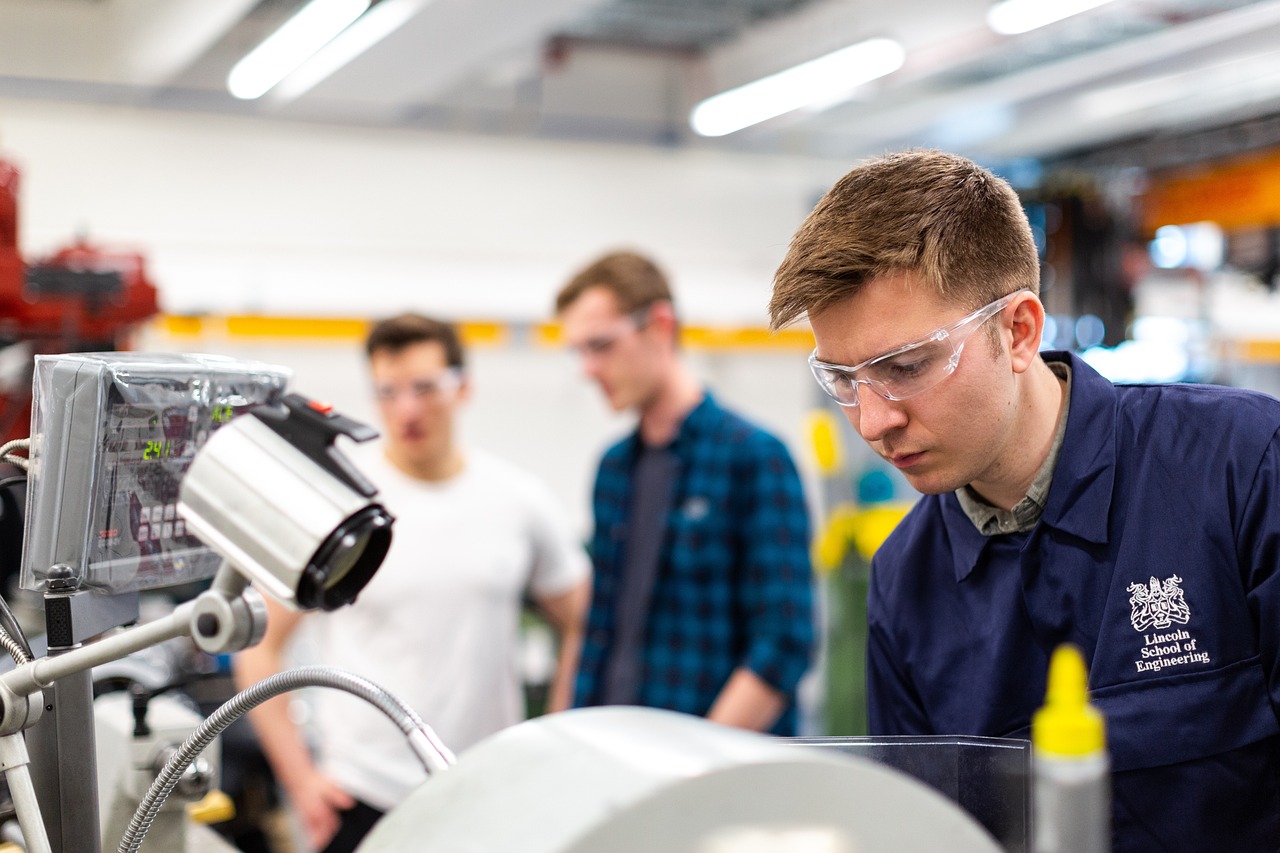
Decision-Making Algorithms
In the rapidly evolving landscape of military technology, are becoming the backbone of combat robotics. These sophisticated algorithms empower robotic systems to assess complex battlefield scenarios with remarkable speed and accuracy. Imagine a battlefield where a robot can evaluate threats and prioritize actions in real-time, much like a seasoned commander making split-second decisions. This capability not only enhances the effectiveness of combat robots but also significantly reduces the cognitive load on human operators, allowing them to focus on higher-level strategic tasks.
At the core of these algorithms lies a combination of data analysis, pattern recognition, and predictive modeling. By analyzing vast amounts of data from various sensors and inputs, combat robots can identify potential threats and assess their severity. For instance, if a drone detects movement in a restricted area, the algorithm can quickly analyze the type of movement, determine if it poses a threat, and suggest appropriate responses. This rapid processing capability is crucial in high-stakes environments where every second counts.
Moreover, these algorithms are designed to adapt to dynamic combat scenarios. They can learn from previous encounters and experiences, which means they continuously improve their decision-making processes. This adaptability is akin to a chess player who learns from each game, refining their strategies and anticipating their opponent's moves. As combat robots gather more data, their algorithms evolve, making them increasingly effective in countering new tactics employed by adversaries.
To illustrate the impact of decision-making algorithms in combat robotics, consider the following table that outlines key features and benefits:
| Feature | Benefit |
|---|---|
| Real-time Data Processing | Enables rapid threat assessment and response. |
| Adaptive Learning | Improves performance over time through experience. |
| Reduced Cognitive Load | Allows human operators to focus on strategic decisions. |
| Enhanced Situational Awareness | Provides comprehensive battlefield insights for better decision-making. |
As we look to the future, the integration of advanced decision-making algorithms in combat robotics is set to revolutionize military operations. These algorithms not only enhance the operational capabilities of robotic systems but also redefine the way soldiers interact with technology on the battlefield. The collaboration between human intuition and robotic precision will create a new paradigm in warfare, where both elements work in tandem to achieve mission success.
- What are decision-making algorithms?
Decision-making algorithms are complex systems that enable robots to assess situations, analyze data, and make informed choices in real-time. - How do these algorithms improve combat effectiveness?
By rapidly processing data and learning from experiences, these algorithms enhance situational awareness and allow for quicker, more accurate responses to threats. - Can decision-making algorithms adapt to new strategies?
Yes, they are designed to learn and adapt over time, improving their decision-making capabilities as they encounter new scenarios. - What role do humans play in this system?
Humans provide strategic oversight and can intervene when necessary, allowing robots to handle routine tasks and freeing up soldiers for higher-level decision-making.

Machine Learning for Adaptability
In the dynamic landscape of modern warfare, the ability of combat robots to adapt to rapidly changing conditions is nothing short of revolutionary. Machine learning plays a pivotal role in this adaptability, allowing combat vehicles to learn from their experiences and improve their performance over time. Imagine a soldier in the field, constantly adjusting tactics based on the enemy's movements; now imagine a robot doing the same, but with the added advantage of processing vast amounts of data in real-time.
Through machine learning algorithms, these robotic systems can analyze previous encounters and outcomes, identifying patterns that inform future actions. For instance, if a combat vehicle encounters an ambush, it can learn from that experience, altering its route or tactics in subsequent missions. This capability not only enhances operational effectiveness but also significantly reduces the risk to human personnel.
Moreover, machine learning enables combat robots to adapt to new strategies employed by adversaries. As enemies evolve their tactics, these robots can quickly assimilate this information and adjust their responses accordingly. This adaptability is akin to a chess player anticipating an opponent's moves and countering them with strategic foresight. The integration of machine learning thus transforms combat vehicles from mere tools into intelligent systems capable of independent decision-making.
To illustrate the impact of machine learning on combat robotics, consider the following table that outlines key areas where adaptability is enhanced:
| Area of Adaptability | Description |
|---|---|
| Threat Assessment | Robots can analyze data from sensors to identify potential threats in real-time, allowing for quicker, more informed responses. |
| Tactical Adjustments | Learning from past missions enables robots to modify their strategies based on the current battlefield scenario. |
| Resource Management | Machine learning helps optimize the use of available resources, ensuring that combat vehicles operate efficiently under varying conditions. |
As machine learning continues to evolve, the implications for combat robotics are profound. These systems will not only be able to perform tasks but will also evolve in their capabilities, becoming more effective as they gain experience. This is a game-changer for military operations, where the stakes are high, and the margin for error is minimal. The future of warfare is not just about having the best technology; it's about having technology that can think, learn, and adapt, ensuring that military forces maintain a strategic edge on the battlefield.
- What is machine learning in combat robotics? Machine learning in combat robotics refers to the use of algorithms that allow robots to learn from experiences and improve their performance over time, adapting to new situations and strategies.
- How does machine learning enhance operational efficiency? By enabling combat robots to analyze past encounters and adjust their tactics, machine learning improves decision-making and reduces risks to human operators.
- Can combat robots learn from their mistakes? Yes, combat robots can learn from previous experiences, including mistakes, which allows them to avoid similar errors in the future and enhance their effectiveness in missions.

Human-Robot Collaboration
As we stand on the brink of a new era in military operations, the concept of is becoming increasingly vital. Imagine a battlefield where soldiers and robotic systems work together, not as separate entities, but as a cohesive unit, each enhancing the other’s capabilities. This synergy is not just a futuristic dream; it’s happening right now, transforming the way military missions are executed. The integration of robots into combat scenarios is leading to improved efficiency and safety, allowing troops to focus on their core tasks while robots handle the heavy lifting.
Training programs are evolving to ensure that military personnel can effectively operate alongside these robotic systems. Just as a pilot learns to trust their aircraft, soldiers must develop a rapport with their mechanical counterparts. This involves not just understanding how to control the robots, but also how to interpret their actions and responses. The goal is to create a seamless interaction where human intuition and robotic precision come together. The training process is designed to foster this collaboration, incorporating simulations that mimic real-world scenarios, allowing soldiers to practice and refine their skills in a safe environment.
Moreover, the collaboration extends beyond just operating the robots. It involves a deep understanding of the capabilities and limitations of each robotic system. For instance, some robots may excel in reconnaissance, while others are designed for logistical support. By knowing what each robot can do, soldiers can deploy them effectively, maximizing their impact on the mission. This collaborative approach is akin to a well-rehearsed orchestra, where each musician plays their part in harmony to produce a beautiful symphony.
However, as we dive deeper into this collaboration, we must also address the safety and ethical considerations that come with it. The integration of robotics in combat raises questions about accountability and decision-making. Who is responsible if a robot makes a mistake? How do we ensure that these systems are used ethically in the heat of battle? These are not just theoretical questions; they are pressing issues that need to be addressed to maintain trust in military operations.
To facilitate this human-robot collaboration, a framework is being developed that includes guidelines for safe interactions, protocols for decision-making, and strategies for conflict resolution between humans and robots. This framework is crucial in ensuring that as robots become more autonomous, they remain under human control and oversight. The objective is to create a partnership where both humans and robots can thrive, ultimately leading to better mission outcomes.
As we look to the future, the potential for human-robot collaboration in military settings is enormous. With advancements in artificial intelligence and machine learning, we can expect robots to become even more intuitive and responsive to human commands. This evolution will not only enhance operational efficiency but also allow soldiers to operate in environments that were previously deemed too dangerous. The battlefield of tomorrow will be a place where human ingenuity and robotic strength combine to create a formidable force.
- What is human-robot collaboration?
Human-robot collaboration refers to the partnership between soldiers and robotic systems working together to enhance operational efficiency and safety during military missions. - How is training for human-robot collaboration conducted?
Training includes simulations and real-world scenarios to help soldiers learn how to effectively operate and communicate with robotic systems. - What are the ethical considerations of using robots in combat?
Ethical considerations include accountability for actions taken by robots and ensuring that their use aligns with military and humanitarian laws. - How do robots improve mission outcomes?
Robots enhance mission outcomes by taking on dangerous tasks, providing real-time data, and allowing soldiers to focus on strategic decisions.
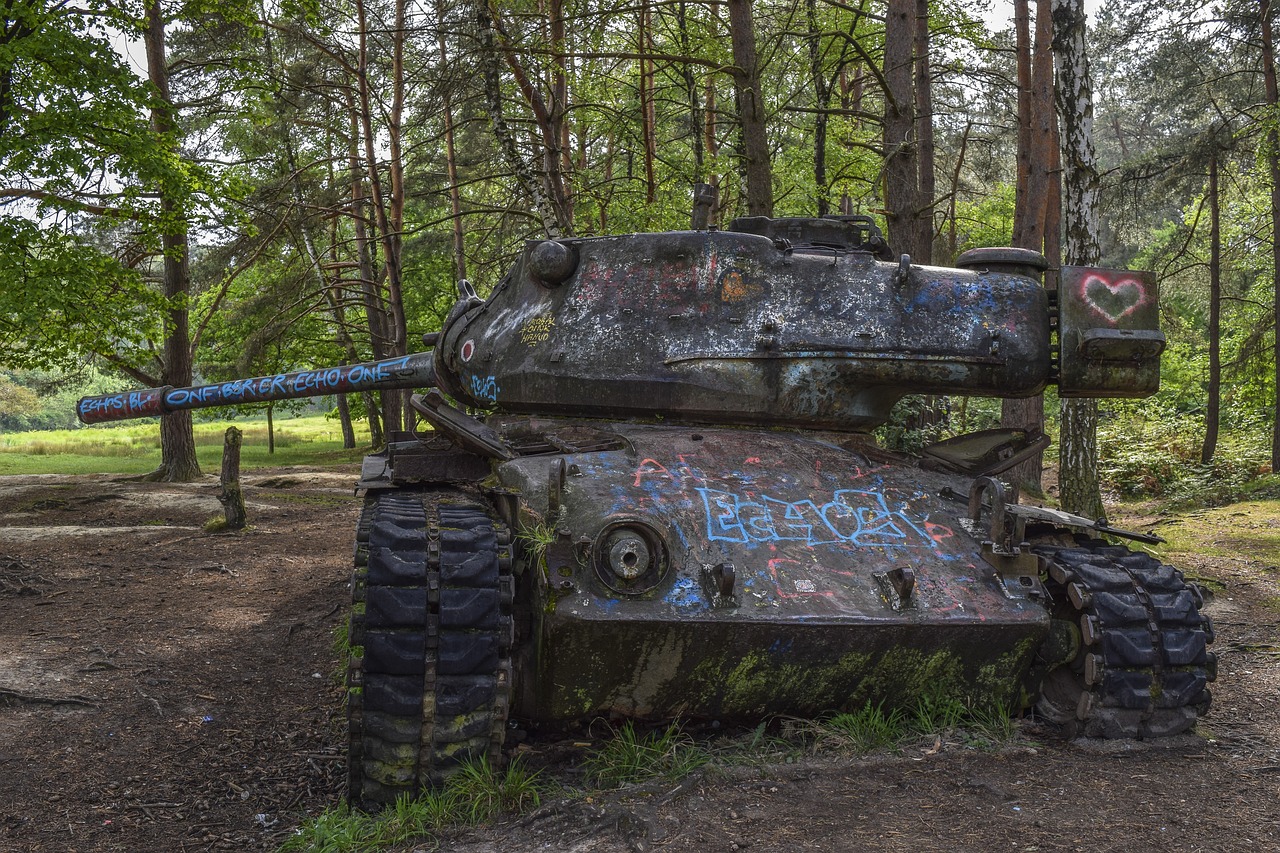
Training and Integration
As we dive deeper into the realm of combat robotics, the importance of effective training and integration cannot be overstated. The military is not just throwing robots into the mix and hoping for the best; there’s a whole new level of preparation that soldiers must undergo to work alongside these advanced systems. Imagine trying to dance with a partner you’ve never met before—without practice, it could turn into a chaotic mess. Similarly, soldiers need to be well-versed in the capabilities and limitations of their robotic counterparts to ensure seamless collaboration on the battlefield.
Training programs are evolving significantly, incorporating cutting-edge technologies such as virtual reality (VR) and simulations to provide realistic environments for soldiers to practice in. These immersive experiences allow personnel to familiarize themselves with robotic systems, understanding not just how to operate them, but also how to communicate effectively in high-pressure situations. This kind of training is crucial because, unlike traditional vehicles, robots can behave unpredictably, and soldiers must be prepared to adapt quickly.
Moreover, the integration process involves more than just teaching soldiers how to control a robot. It’s about fostering a mindset where human-robot collaboration becomes second nature. This means developing teamwork exercises that emphasize communication and trust between human operators and their robotic allies. For instance, joint exercises might require a soldier to direct a robotic arm to defuse a bomb while providing real-time updates to their team. This kind of training not only enhances operational efficiency but also boosts the confidence of soldiers working alongside machines.
To further illustrate the importance of this integration, consider the following table that outlines key training components:
| Training Component | Description |
|---|---|
| Simulation Training | Utilizing VR and simulations to practice operations in a controlled environment. |
| Team Exercises | Conducting joint missions that require collaboration between soldiers and robotic systems. |
| Technical Proficiency | Ensuring soldiers understand the technical aspects of the robots they will operate. |
| Adaptability Drills | Training soldiers to think on their feet and adapt to changing situations involving robots. |
As we look toward the future, one thing is clear: the integration of robotics in combat vehicles will only deepen. This necessitates a continual evolution of training programs. By embracing innovative training methods and fostering a culture of collaboration, military forces can maximize the potential of both human and robotic capabilities, ultimately leading to enhanced mission success rates and improved safety for personnel. In this new age of warfare, the synergy between humans and robots will redefine the battlefield, making effective training and integration more crucial than ever.
- What are the main benefits of integrating robotics in combat vehicles?
Integrating robotics enhances operational efficiency, improves safety by minimizing human exposure to danger, and enables more precise execution of complex tasks. - How does training for human-robot collaboration differ from traditional military training?
Training for human-robot collaboration focuses on understanding robotic systems, practicing joint operations, and developing communication skills, which are not typically emphasized in traditional military training. - What technologies are used in training programs for soldiers working with robots?
Training programs often utilize virtual reality, simulations, and advanced technical training to prepare soldiers for working alongside combat robots. - Are there ethical concerns regarding the use of robotics in combat?
Yes, as robotics become more integrated into combat operations, it raises ethical questions about accountability, decision-making, and the potential for unintended consequences.
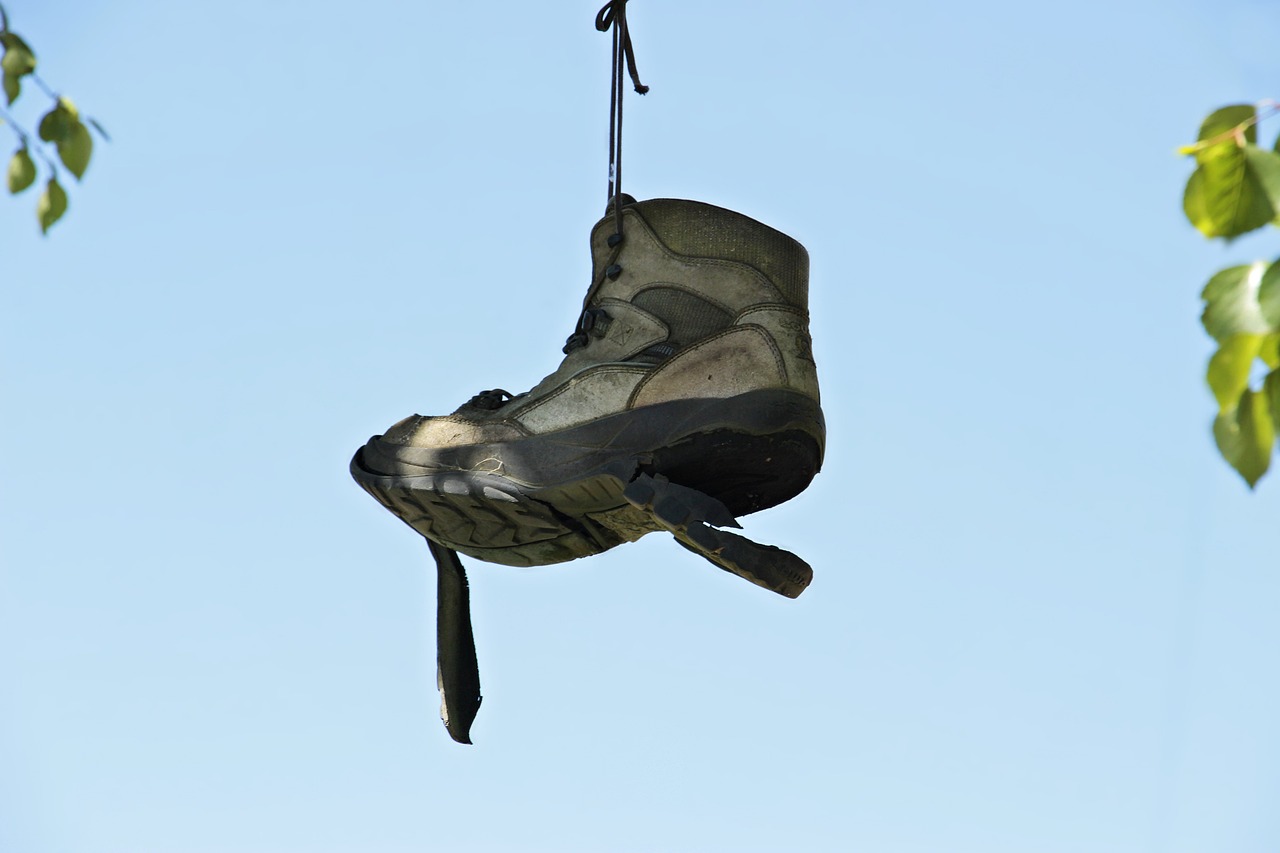
Safety and Ethical Considerations
As the integration of robotics into military combat vehicles accelerates, the importance of safety and ethical considerations cannot be overstated. The use of autonomous systems in warfare raises critical questions about accountability, decision-making, and the potential for unintended consequences. For instance, when a robot makes a decision that leads to collateral damage, who is held responsible? Is it the programmer, the military commander, or the machine itself? These questions highlight the need for clear guidelines and regulations surrounding the deployment of combat robots.
Moreover, the potential for misuse of robotic technology is a significant concern. As we enhance the capabilities of these systems, we must also consider the implications of their use in conflict situations. For example, could an adversary hack into a robotic system, turning it against its operators? This scenario emphasizes the need for robust cybersecurity measures to protect these technologies.
In addition to accountability and cybersecurity, there are also ethical dilemmas associated with the use of combat robots. The idea of machines making life-and-death decisions can be unsettling. The moral implications of delegating such responsibilities to machines challenge our traditional views on warfare and human agency. To address these issues, military organizations must engage in ongoing discussions about the ethical frameworks that govern the use of robotic systems in combat.
To further illustrate the complexities of these considerations, we can look at the following table, which outlines some key safety and ethical concerns related to combat robotics:
| Concern | Description |
|---|---|
| Accountability | Determining who is responsible for decisions made by autonomous systems. |
| Cybersecurity | Protecting robotic systems from hacking and unauthorized control. |
| Moral Implications | Debating the ethics of allowing machines to make lethal decisions. |
| Unintended Consequences | Understanding the potential for robots to cause harm outside intended targets. |
In conclusion, as we move forward with the integration of robotics in combat vehicles, it is essential to maintain a balanced approach that prioritizes safety and ethical considerations. This involves not only developing advanced technologies but also fostering a culture of responsibility and accountability within military operations. Ultimately, the goal should be to enhance operational effectiveness while ensuring that the use of robotic systems aligns with our moral and ethical standards.
- What are the main ethical concerns regarding combat robots? Ethical concerns include accountability for decisions made by robots, potential misuse of technology, and the moral implications of machines making life-and-death choices.
- How can military organizations ensure the safety of combat robots? Ensuring safety involves implementing robust cybersecurity measures, developing clear guidelines for accountability, and engaging in ethical discussions about the deployment of robotic systems.
- What role does human oversight play in the use of combat robots? Human oversight is crucial to ensure that decisions made by robots align with ethical standards and to maintain accountability in military operations.
Frequently Asked Questions
- What are the main benefits of integrating robotics into combat vehicles?
The integration of robotics into combat vehicles significantly enhances operational efficiency and safety. By employing autonomous navigation systems, these vehicles can navigate complex terrains without human intervention, reducing risks to personnel and improving mission success rates. Additionally, robotic arms and manipulators allow for precise handling of equipment, minimizing physical strain on human operators.
- How do Unmanned Ground Vehicles (UGVs) improve military operations?
UGVs play a crucial role in reconnaissance and logistics by providing real-time data while keeping soldiers safe from hostile environments. Equipped with advanced sensors, they enhance surveillance capabilities, allowing military forces to gather intelligence without risking human lives. Furthermore, they can transport supplies to remote locations, ensuring troops are well-equipped during missions.
- What role does artificial intelligence play in combat robotics?
AI technologies are pivotal in combat robotics, enabling vehicles to analyze data, make autonomous decisions, and adapt to changing battlefield conditions. Sophisticated decision-making algorithms help combat robots assess threats and prioritize actions, enhancing their effectiveness. Moreover, machine learning allows these robots to learn from experiences and improve their performance over time.
- How does human-robot collaboration work in military settings?
The future of combat vehicles hinges on effective human-robot collaboration. Training programs are evolving to incorporate human-robot interaction, ensuring military personnel can operate seamlessly alongside robotic systems. This collaboration enhances mission outcomes and operational efficiency, allowing soldiers to focus on strategic tasks while robots handle logistical and operational challenges.
- What safety and ethical considerations are associated with combat robotics?
As robotics become more integrated into combat operations, it's essential to address safety and ethical concerns. This includes ensuring accountability for robotic actions and minimizing unintended consequences. Military organizations are developing guidelines and protocols to navigate these challenges, ensuring that the use of robotics in combat is responsible and aligned with ethical standards.










